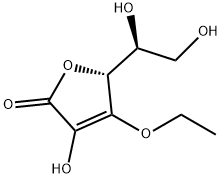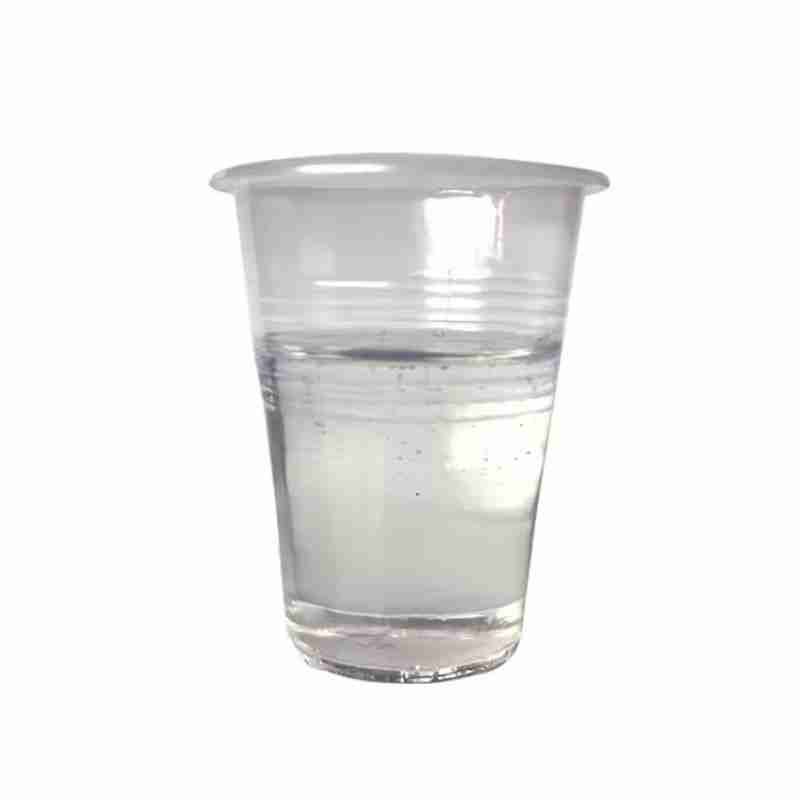3-O-Ethyl-L-ascorbic acid CAS#86404-04-8
3-O-Ethyl ascorbic acid ether, also called VC ethyl ether, is an ascorbic acid derivative. Ascorbic acid is a naturally occurring antioxidant and free radical scavenger, a reducing agent in the conversion process of biological enzymes, and has a preventive effect on some chronic diseases (cancer, diabetes and allergic skin diseases). From the molecular structure of ascorbic acid, it can be seen that compared to the 2-position enol hydroxyl group, the 3-position enol hydroxyl group has higher activity on electrophiles, and it is the product of 3-O-alkylation during O-alkylation modification. Mainly. 3-O-Ethyl ascorbate ether is a product of ascorbic acid-3-O-ethylation. It has a simple molecular structure and is easily absorbed by the skin. After entering the dermis through the stratum corneum of the skin, it is easily decomposed by the biological enzymes in the human body. The effect of ascorbic acid effectively solves the fat solubility problem of ascorbic acid, and is widely used in cosmetics as a whitening agent and antioxidant.
发送询盘
3-O-Ethyl-L-ascorbic acid CAS#86404-04-8
| 3-O-Ethyl-L-ascorbic acid Basic information |
| Product Name: | 3-O-Ethyl-L-ascorbic acid |
| Synonyms: | 3-O-Ethyl-L-ascorbic Acid;3-o-ethyl-l-ascorbic acid;3-O-ETHYLASCORBICACID;(5R,1’S)-5-(1,2-Dihydroxy-ethyl)-4-ethoxy-3-hydroxy-5H-furan-2-one;(5R)-5-(1,2-dihydroxyethyl)-4-ethoxy-3-hydroxy-2,5-dihydrofuran-2-one;(5R)-5-[(1S)-1,2-dihydroxyethyl]-4-ethoxy-3-hydroxyfuran-2(5H)-one (non-preferred naMe);3-O-Ethyl vitaMin C ester;Only VCE |
| CAS: | 86404-04-8 |
| MF: | C8H12O6 |
| MW: | 204.18 |
| EINECS: | 617-849-3 |
| Product Categories: | Vitamine C derivative;API;86404-04-8 |
| Mol File: | 86404-04-8.mol |
 |
|
| 3-O-Ethyl-L-ascorbic acid Chemical Properties |
| Melting point | 112.0 to 116.0 ??C |
| Boiling point | 551.5??50.0 ??C(Predicted) |
| density | 1.46??0.1 g/cm3(Predicted) |
| vapor pressure | 0-0Pa at 20-25?? |
| storage temp. | Sealed in dry,2-8??C |
| solubility | Methanol (Slightly), Water (Slightly) |
| pka | 8.89??0.40(Predicted) |
| form | Solid |
| color | White to Off-White |
| InChI | InChI=1S/C8H12O6/c1-2-13-7-5(11)8(12)14-6(7)4(10)3-9/h4,6,9-11H,2-3H2,1H3/t4-,6+/m0/s1 |
| InChIKey | ZGSCRDSBTNQPMS-UJURSFKZSA-N |
| SMILES | O(CC)C1=C(O)C(=O)O[C@@H]1[C@H](CO)O |
| LogP | -0.8–0.64 at 20-25?? and pH7 |
| Surface tension | 69-72.4mN/m at 1g/L and 20?? |
| Safety Information |
| HS Code | 2936.27.0000 |
- 2
- 2-diallylpent-4-en-1-amine
- 4
- 95-16-9
- Ammonium sulfamate
- Benzothiazole
- cas:67889-00-3ح2
- cas:83524-75-8 | pigment black 32
- cas:928836-00-4 | 2
- cas:932745-70-5 | 4
- Chemical Minerals
- Coconut diethanolamide
- Daily Chemicals
- discount
- for sale
- General pvc resin
- hexyl D-glucoside
- in stock
- Lauramidopropyl betaine
- LAURIC ACID MONOETHANOLAMIDE
- Petroleum Additives
- Plasticiser
- Ploymers
- price
- PVC
- quotation
- Raw Materal
- Remove term: Petroleum Additives Petroleum Additive
- SODIUM ETHYL 2-SULFOLAURATE
Related Products
Octocrylene is an organic compound widely recognized for its potent UV-filtering properties, making it an essential ingredient in sunscreens and other skincare products designed to protect the skin from harmful ultraviolet radiation. With the chemical name 2-(4-Methylbenzyl)-2H-benzotriazole-5-methyl, octocrylene is a stable and photostable molecule that provides broad-spectrum protection against both UVA and UVB rays.
This oil-soluble chemical is valued for its ability to absorb UV radiation effectively, converting it into heat without causing skin irritation or staining clothes. Octocrylene is often used in combination with other UV filters to enhance the sun protection factor (SPF) of formulations, ensuring a balanced and comprehensive defense against sun damage.
As a lipophilic compound, octocrylene is compatible with various cosmetic and dermatological formulations, contributing to the development of lightweight, non-greasy sunscreens. Its chemical structure allows for a high degree of safety and efficacy, making it suitable for a wide range of skin types, including sensitive skin.
In summary, octocrylene is a reliable and efficient UV filter, pivotal in the formulation of modern sunscreens that offer advanced protection against the sun’s harmful effects while maintaining skin comfort and product aesthetics.
Butylated Hydroxytoluene (BHT) is a synthetic phenolic antioxidant commonly added to foods, cosmetics, and packaging to prevent the oxidation of fats and oils, thereby extending their shelf life. It is also used as a preservative in a variety of products, including rubber, petroleum products, and animal feed. BHT is recognized for its effectiveness in maintaining nutrient levels, color, flavor, and odor in food products . It is known to have a melting point of 69-71??C, a boiling point of 265??C, and is soluble in ethanol, acetone, and benzene, but not in water, glycerin, or propylene glycol . BHT is also used in some dietary supplements due to its antioxidant properties . However, it is important to handle BHT with care, as it can cause skin irritation and is considered harmful if swallowed .
Common English name: 5-iodo-2,3-dihydropyridazin-3-one
CAS No.: 825633-94-1
Molecular formula: C4H3IN2O
Molecular weight: 221.98
Sample: Available
Polyhexamethylene guanidine hydrochloride, often abbreviated as PHMG-HCl, is a high molecular weight polymeric biguanide compound known for its potent antimicrobial properties. With a chemical structure that features a long chain of methylene groups bridged by guanidine units, PHMG-HCl is effective against a broad spectrum of microorganisms, including bacteria, viruses, and fungi.
This hydrochloride salt form of PHMG is highly soluble in water and is commonly used in various applications due to its non-irritant and non-toxic nature to human skin and mucous membranes. It is widely recognized for its ability to form a colorless and odorless solution, making it an ideal choice for use in personal care products, medical disinfectants, and water treatment processes.
The versatility of PHMG-HCl lies in its cationic nature, which allows it to bind to negatively charged microbial cell walls, disrupting their integrity and leading to cell death. This mechanism of action contributes to its effectiveness as a preservative and disinfectant. Moreover, its substantivity, or the ability to adhere to surfaces, enhances its long-lasting antimicrobial activity.
In summary, Polyhexamethylene guanidine hydrochloride is a reliable and efficient antimicrobial agent, pivotal in industries where hygiene and cleanliness are paramount, offering a safe and sustainable solution for microbial control.
Tetraacetylethylenediamine is a fully acetylated derivative of ethylenediamine, offering a high reactivity as an intermediate in organic synthesis. Its unique structure makes it a critical component in the production of specialty chemicals and pharmaceuticals, ensuring a wide range of applications in the chemical industry.
Chemical Name: Ashwagandha Extract
Synonyms: Withania somnifera, ext.; Withania Somnefera Extract
CAS: 90147-43-6
Appearance: Brown
Product name:Cyclopentane
Purity:96%
Appearance:White powder
Package:25kg/bag
Sample:Available
Chemical Name: Arabic gum
CAS No.: 9000-01-5
Appearance: powder
Chemical Name: Dehydrocholic acid
Synonyms: Acide dehydrocholique; Triketocholanic acid
CAS No.: 81-23-2
Molecular Formula: C24H34O5
Molecular Weight: 402.53
Appearance: Powder
Chemical Name: Quercetin-3-O-sophoroside
CAS No.: 18609-17-1
Molecular Formula: C27H30O17
Molecular Weight: 626.52
Chemical Name: Potassium Castorate
CAS No.: 8013-05-6
Molecular Formula: C57H107K3O12
Molecular Weight: 1101.74718
Appearance: Yellow Liquid
Chemical Name: UV-120
Other Name: (2’,4’-Di-tert-butylphenyl 3,5-di-tert-butyl-4-hydroxybenzoate)
CAS No.: 4221-80-1
Molecular Fomula: C29H42O3
Molecular weight: 438.66
Assay: ≥99%(LC)



















